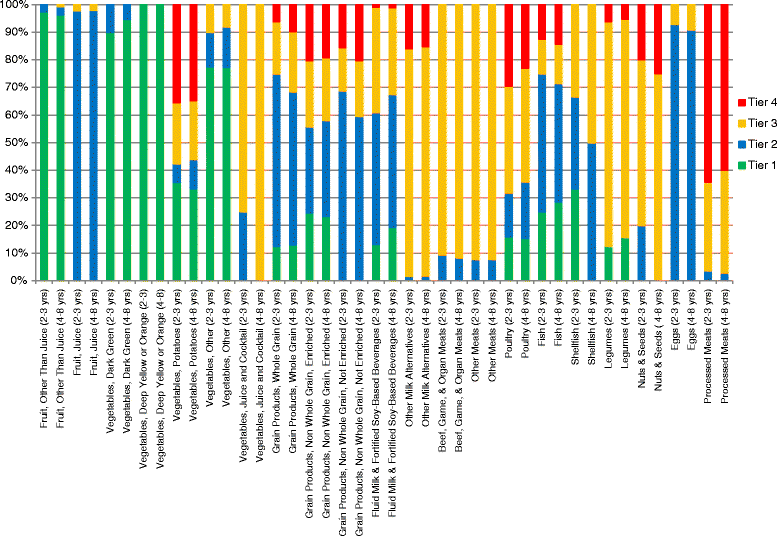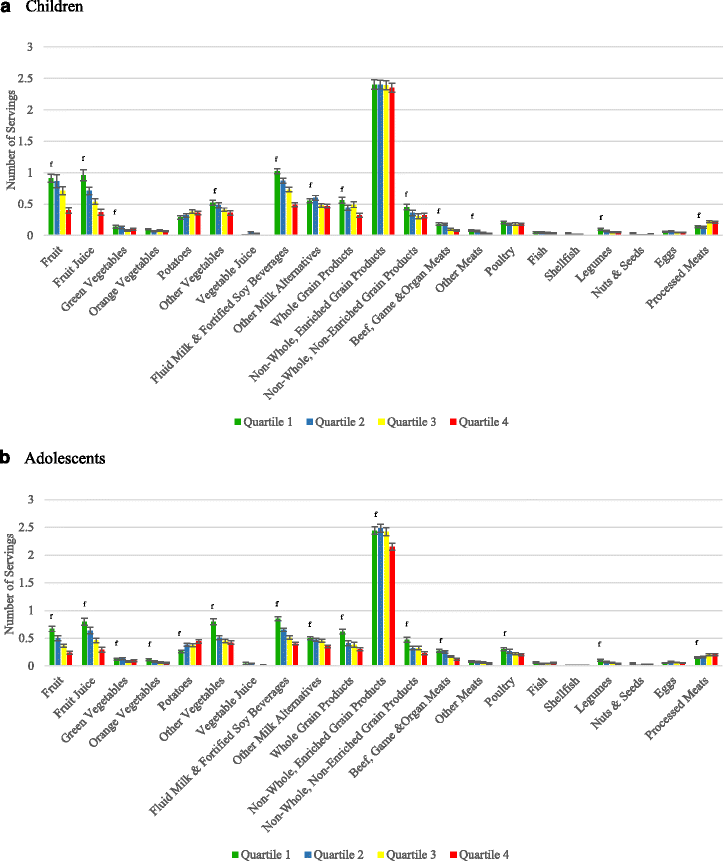Assessing the nutritional quality of diets of Canadian children and adolescents using the 2014 Health Canada Surveillance Tool Tier System
- PMID: 27165415
- PMCID: PMC4862040
- DOI: 10.1186/s12889-016-3038-5
Assessing the nutritional quality of diets of Canadian children and adolescents using the 2014 Health Canada Surveillance Tool Tier System
Abstract
Background: Health Canada's Surveillance Tool (HCST) Tier System was developed in 2014 with the aim of assessing the adherence of dietary intakes with Eating Well with Canada's Food Guide (EWCFG). HCST uses a Tier system to categorize all foods into one of four Tiers based on thresholds for total fat, saturated fat, sodium, and sugar, with Tier 4 reflecting the unhealthiest and Tier 1 the healthiest foods. This study presents the first application of the HCST to examine (i) the dietary patterns of Canadian children, and (ii) the applicability and relevance of HCST as a measure of diet quality.
Methods: Data were from the nationally-representative, cross-sectional Canadian Community Health Survey 2.2. A total of 13,749 participants aged 2-18 years who had complete lifestyle and 24-hour dietary recall data were examined.
Results: Dietary patterns of Canadian children and adolescents demonstrated a high prevalence of Tier 4 foods within the sub-groups of processed meats and potatoes. On average, 23-31 % of daily calories were derived from "other" foods and beverages not recommended in EWCFG. However, the majority of food choices fell within the Tier 2 and 3 classifications due to lenient criteria used by the HCST for classifying foods. Adherence to the recommendations presented in the HCST was associated with closer compliance to meeting nutrient Dietary Reference Intake recommendations, however it did not relate to reduced obesity as assessed by body mass index (p > 0.05).
Conclusions: EWCFG recommendations are currently not being met by most children and adolescents. Future nutrient profiling systems need to incorporate both positive and negative nutrients and an overall score. In addition, a wider range of nutrient thresholds should be considered for HCST to better capture product differences, prevent categorization of most foods as Tiers 2-3 and provide incentives for product reformulation.
Keywords: 2014 Health Canada Surveillance Tool Tier system; Adolescents; Canadian; Children; Nutrient profiling.
Figures


References
-
- US Department of Agriculture . Diet quality of children Age 2-17 years as measured by the healthy eating index-2010. 2013.
-
- United States Department of Health and Human Service. Child Nutrition. Available from: http://www.nlm.nih.gov/medlineplus/childnutrition.html Accessed:28/06/15.
MeSH terms
Grants and funding
LinkOut - more resources
Full Text Sources
Other Literature Sources
Miscellaneous

